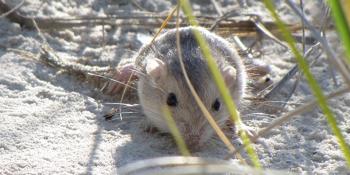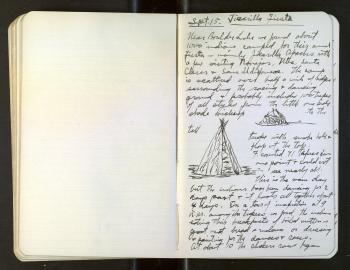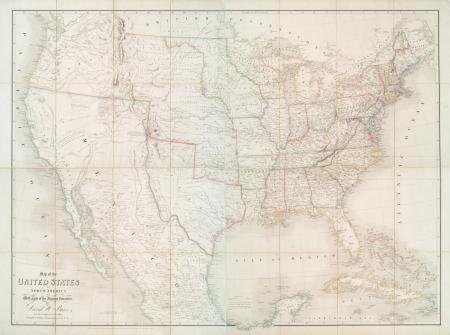The mid-19th century was an interesting time for knowledge in America. Some believed that truly world-class discoveries happened in and came exclusively from Europe. However, in 1840, Congress passed an Act to incorporate the National Institute for the Promotion of Science, which Dr. Joseph Henry, a member of the organization and later Smithsonian’s first Secretary, hoped would change that misconception and bring American science to the forefront. Henry was determined that science be understood as every bit a world-class source of understanding and knowledge in America as in Europe. He recruited experts in scientific fields to the cause and called upon people across the country to assist.
Secretary Henry sometimes sought assistance outside of the Smithsonian. For instance, volunteers, numbering over six hundred at its peak before the Civil War, telegraphed daily reports of the weather around their homes. Each day, Henry posted this information on a large map for visitors.
Other notable early contributions came from Smithsonian ornithologists Spencer F. Baird, Smithsonian’s second Secretary, and Robert Ridgway. The two pursued their studies of North American birds and communicated with naturalists stationed around the country about observations in their own locations. Along with ornithologist Thomas M. Brewer, Baird and Ridgway authored A History of North American Birds in 1905.

Additionally, quite a number of notable botanists and biologists, who worked with the United States Department of Agriculture’s Bureau of Biological Survey, were also affiliated with the Smithsonian. Some of them spent extended time in what was probably considered remote and poorly documented areas of the country like the Southwest, the Dakotas, and Russian America. These scientists documented not only the presence of known species, but also brand new ones like the Perganthus apache mouse (above) noted frequently in Vernon Bailey’s field books.
Amongst these field journals and diaries is an occasional note about local people and events they were privileged to, such a Jicarilla Apache fiesta recorded in Bailey's notes below. It’s interesting to see what stood out to these trained observors in light of America’s social context at the end of the 19th century.

Related Collections
- Bailey, V. O., Colorado, New Mexico, Texas, July 1904 - December 1904, Smithsonian Institution Archives
Related Resources
- Joseph Henry Calls for National Weather Service, Smithsonian Institution Archives
- “Baird’s Network,” by Effie Kapsalis, The Bigger Picture, Smithsonian Institution Archives
Produced by the Smithsonian Institution Archives. For copyright questions, please see the Terms of Use.


Leave a Comment